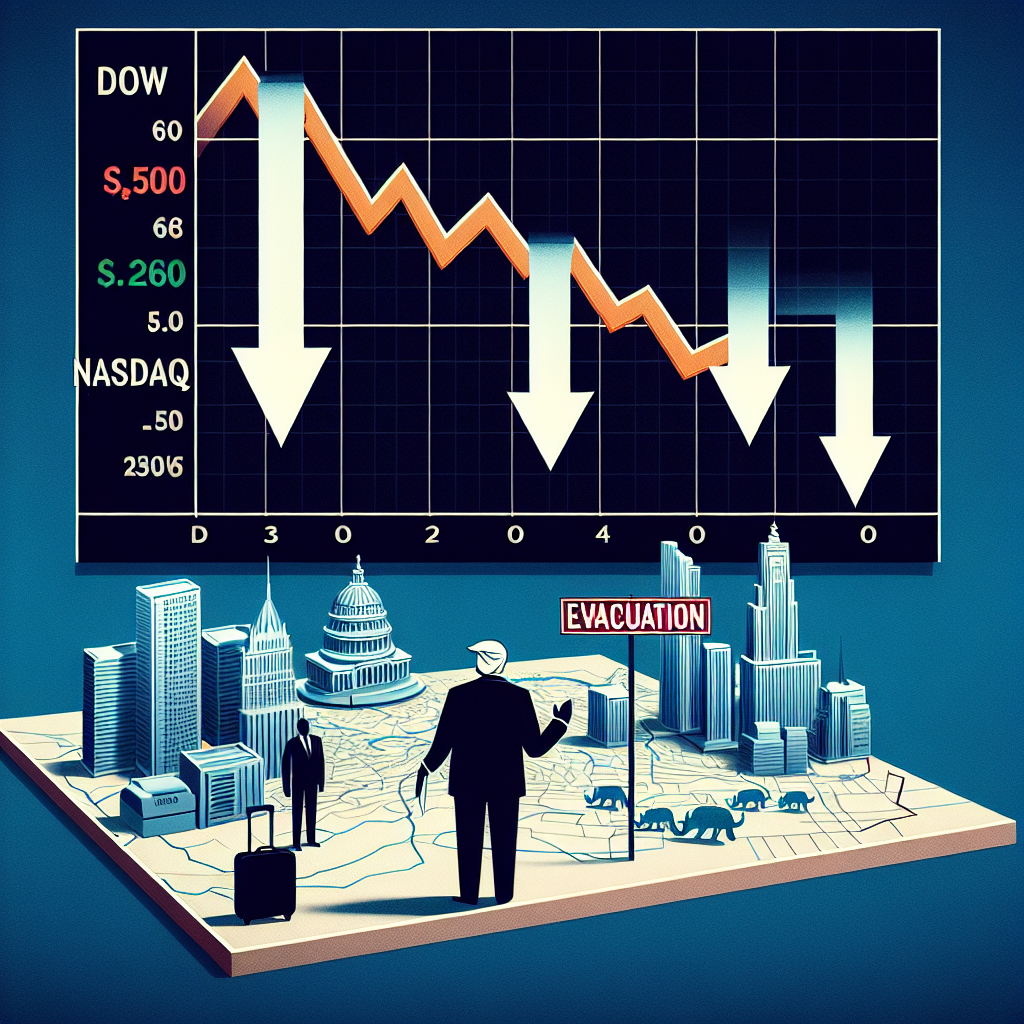Market Jitters Rise Amid Intensifying Geopolitical Tensions and Economic Uncertainty
US stock futures saw a sharp decline on Tuesday as escalating military tensions between Israel and Iran rattled global markets. The geopolitical unrest, coupled with persistent inflation and a shifting trade landscape, has left investors weighing risk and seeking clarity on the path forward.
U.S. Futures Slide Ahead of the Opening Bell
Futures tied to the major US indexes pointed noticeably downward in early trading:
- Dow Jones Industrial Average futures dropped over 200 points, indicating a bearish start to the trading session.
- S&P 500 futures also moved lower by nearly 1%, as investor sentiment wavered amid global headlines.
- Nasdaq Composite futures tumbled more than 1.3%, heavily impacted by losses in tech stocks and global risk aversion.
The selloff highlights the fragility of current market conditions as investors assess the dual threat of international conflict and stubbornly high interest rates.
Trump’s Evacuation Call Deepens Global Concerns
Markets were particularly shaken following former President Donald Trump’s call for an evacuation of Tehran, Iran’s capital. His statement, made amid a series of escalating Israeli-Iranian military strikes, added to fears of broader regional conflict in the Middle East.
Such direct political intervention raises the stakes and adds a layer of unpredictability to an already tense situation. Analysts worry that further military aggression could disrupt oil supply lines and global trade, especially if Iran responds with wider regional retaliation or escalates tensions in the Strait of Hormuz.
Geopolitical Risk Joins Forces With Economic Headwinds
The market’s fragility isn’t solely based on geopolitical developments. Investors are also digesting a slew of other economic pressures:
- Stubborn inflation: Despite aggressive rate hikes by the Federal Reserve, inflation remains persistently above the central bank’s 2% target.
- Interest rate outlook: Continued concerns that the Fed may need to hold rates higher for longer or even raise rates again have kept equity markets on edge.
- US-China tensions: Recent policy shifts in trade and technology restrictions targeted at Chinese firms have contributed to greater uncertainty in the global tech market.
Investors Seek Safe Havens
In response to these crises, many traders have rotated out of equities into perceived safer assets:
- Gold prices hit a new monthly high, reflecting rising demand for the traditional haven investment.
- U.S. Treasury yields fell slightly as investors rushed to lock in safety despite low yields.
- The dollar strengthened against major currencies, buoyed by fears of international instability and potential shocks to other markets.
What’s Next for Wall Street?
Wall Street’s short-term trajectory hangs in the balance as investors monitor key signals:
- Any further escalation in the Middle East could trigger a significant risk-off sentiment, especially if oil prices spike and global supply chains are threatened.
- The Federal Reserve’s next meeting and economic data releases—particularly CPI and job market updates—will be scrutinized for hints about the central bank’s next moves.
- Corporate earnings, especially in the defense, tech, and energy sectors, may offer insight into how companies are navigating today’s complex environment.
Expert Outlook: Stay Cautious
According to market analysts and strategists, today’s environment demands a cautious approach.
“The trifecta of geopolitical escalation, inflationary stickiness, and policy ambiguity is unnerving investors,” one strategist noted. “Until clarity emerges on monetary direction and geopolitical flashpoints settle, volatility will likely dominate.”
Conclusion: A Tumultuous Path Ahead
Investors are navigating a minefield of global challenges. The combination of military escalation, political friction, economic uncertainty, and tighter monetary policy presents a uniquely volatile mix.
While long-term implications remain uncertain, market participants must stay alert, diversify appropriately, and expect continued volatility. As new headlines emerge, particularly with regard to Middle Eastern conflict and central bank actions, the market will continue to react swiftly—and often sharply.
For traders and investors alike, risk management, strategic positioning, and real-time awareness are more important than ever.



Leave a Reply